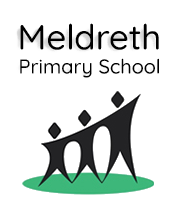In English, by the end of Year 4 children should be able to...
Reading
- Give a personal point of view on a text.
- Re-explain a text with confidence.
- Justify inferences with evidence, predicting what might happen from details stated or implied.
- Use appropriate voices for characters within a story.
- Recognise apostrophe of possession (plural)
- Identify how sentence type can be changed by altering word order, tenses, adding/deleting words or amending punctuation.
- Explain why a writer has used different sentence types or a particular word order and the effect it has created.
- Skim & scan to locate information and/or answer a question.
Writing
- Vary sentence structure, using different openers.
- Use adjectival phrases (e.g. biting cold wind).
- Use appropriate choice of noun or pronoun.
- Use fronted adverbials.
- Use a comma after fronted adverbial (e.g. Later that day, I heard bad news.).
- Use apostrophe for plural possession.
- Use commas to mark clauses.
- Use inverted commas and other punctuation to punctuate direct speech.
- Use paragraphs to organised ideas around a theme.
- Use connecting adverbs to link paragraphs.
- Write with increasing legibility, consistency and fluency.
In Mathematics, by the end of Year 4 children should be able to...
- Count backwards through zero to include negative numbers.
- Compare and order numbers beyond 1,000.
- Compare and order numbers with up to 2 decimal places.
- Read Roman numerals to 100.
- Find 1,000 more/less than a given number.
- Count in multiples of 6, 7, 9, 25 and 1000.
- Recall and use multiplication and division facts all tables to 12x12.
- Recognise the place value of any 4-digit number.
- Round any number to the nearest 10, 100 or 1,000.
- Round decimals with 1 decimal place to nearest whole number.
- Add and subtract numbers with up to 4-digits using written column method.
- Multiply:
o 2-digit by 1-digit
o 3-digit by 1-digit - Count up/down in hundredths.
- Recognise and write equivalent fractions
- Add and subtract fractions with same denominator.
- Read, write and convert time between analogue and digital 12 and 24 hour clocks.
